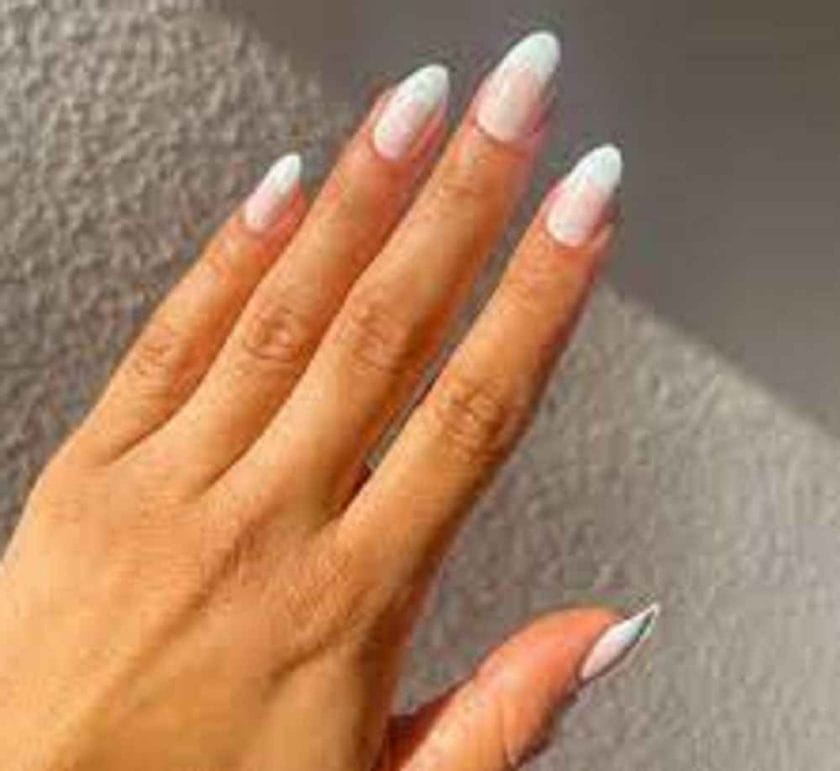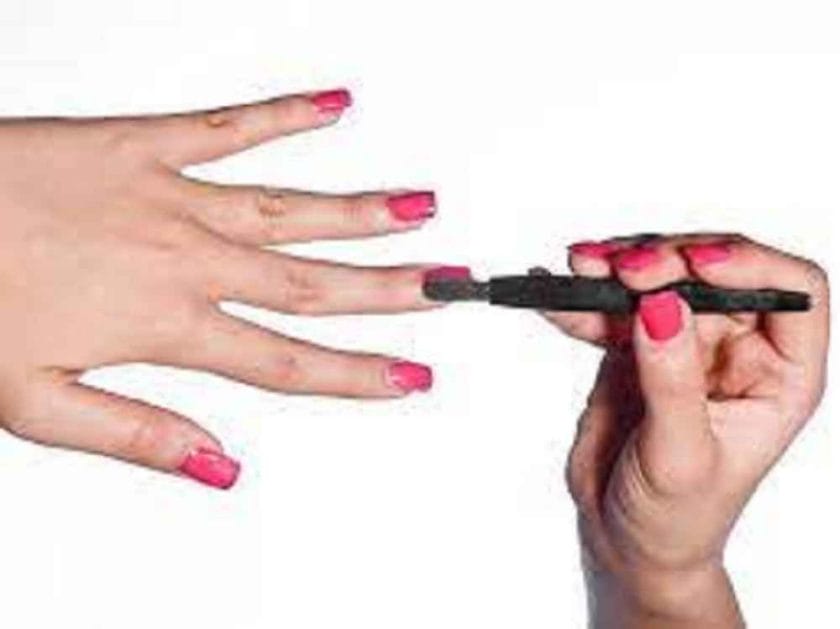What are sticky acrylic nails?
Sticky acrylic nails refer to a condition where the surface of the acrylic nails becomes sticky or tacky, often making it difficult to touch or use your hands. This can be a frustrating problem, especially if you have just applied a new set of acrylic nails.
Causes of sticky acrylic nails
Do you have sticky acrylic nails? Here are some of the causes of the sticky acrylic nails:
Poor application:
If the acrylic nails are not applied correctly, it can result in a sticky surface. This can happen if the nails are not fully cured before they are used.
It can also occur if the nails are not properly buffed or if there is too much moisture present when the nails are applied.
Exposure to moisture:
Acrylic nails can become sticky if they are exposed to moisture or humidity. Exposure to moisture will cause the moisture to penetrate the surface of the nails and this will cause the nails to become tacky.
This can happen if you wash your hands frequently, if you engage in activities that cause your hands to sweat, or if you are in an environment with high humidity levels.
Lack of proper nail care:
Neglecting to properly care for your acrylic nails can lead to a sticky surface. This includes failure to clean your nails regularly.
This can also happen if you fail to apply a top coat to protect the surface of your nails, and neglect to remove any residue that may accumulate on the surface of your nails.

Using low-quality products:
Using low-quality products, such as cheap nail polish or acrylic nails, can also lead to sticky acrylic nails. These low-quality products may not adhere properly to the nails, or they may contain ingredients that can cause the nails to become sticky.
Underlying health issues:
In some cases, sticky acrylic nails can also be a result of an underlying health issue, such as a fungal infection. However, this happens in rare cases.
Common symptoms of sticky acrylic nails
Common symptoms of sticky acrylic nails include the following:
- Tacky or sticky surface
- Dull appearance
- Peeling or chipping
- Foul odor
Risks and consequences of not fixing sticky acrylic nails
- Increased risk of infections
- Damaged nails and surrounding skin
- Shortened lifespan of acrylic nails
- Poor appearance
Importance of fixing sticky acrylic nails
Fixing sticky acrylic nails is important for a number of reasons. Firstly, it can help improve the appearance of your nails and make them look more polished.
Secondly, it can also prevent further damage to your nails and surrounding skin, which can lead to infections or other complications.
Additionally, fixing sticky acrylic nails can also help improve the longevity of your acrylic nails and prevent them from peeling or chipping.
Fixing Sticky Acrylic Nails
Materials needed
Before you begin fixing your sticky acrylic nails, it is important to gather all of the materials that you will need. These include:
- Nail file: A nail file will be used to remove any rough spots on the surface of your acrylic nails. It is important to choose a file with a fine grit so as not to damage your nails further.
- Nail buffer: A nail buffer will be used to create a smooth finish on the surface of your acrylic nails.
- Acetone: Acetone will be used to clean the surface of your nails and remove any residue that may be present.
- Primer: A primer will be used to prepare your nails for the top coat. This will help the top coat adhere properly to your nails and prevent any future stickiness.
- Top coat: A top coat will be applied to the surface of your acrylic nails to give them a protective layer. This will also help prevent any future stickiness.
Step-by-Step Guide
Here is a step-by-step guide on how to fix your sticky acrylic nails:
File the surface of the acrylic nails to remove any rough spots:
Using your nail file, gently file the surface of your nails to remove any rough spots or rough edges. Make sure to be gentle so as not to damage your nails further.
Buff the surface of the acrylic nails to create a smooth finish:
Using your nail buffer, gently buff the surface of your nails to create a smooth finish. Be sure to buff in a circular motion until the surface is smooth and free of any rough spots.
Clean the nails with acetone to remove any residue:
Using a cotton ball or a cotton swab, apply acetone to the surface of your nails to remove any residue that may be present. Make sure to remove all residue completely, as this can cause the surface of your nails to become sticky.
Apply a primer to the nails to prepare them for the top coat:
Apply a thin layer of primer to the surface of your nails. Make sure to let the primer dry completely before moving on to the next step.
Apply a top coat to the acrylic nails to give them a protective layer:
Apply a thin layer of top coat to the surface of your nails. Make sure to let the top coat dry completely before using your hands. Repeat this step if necessary.
How to Prevent Sticky Acrylic Nails
Here are some tips to help you prevent sticky acrylic nails in the future:
- Observe proper nail care: Always clean your nails regularly and remove any residue that may accumulate on the surface of your nails.
- Apply a top coat to protect the surface of your nails: Regularly applying a top coat to the surface of your nails. The top coat can protect your nails from becoming sticky.
- Apply a primer before applying the acrylic product: Acrylic primers create a water-resistant barrier between your skin and the acrylic product. This stops moisture from penetrating the sticky nail, making the nails feel tacky after 2 or 3 days of wearing it.
- Apply a thinner coat of acrylic instead of thick layers. This helps to avoid too much build-up around the cuticle area. In addition, thicker coatings are more likely to form air bubbles which cause the nails to have a bumpy surface texture.
Proper Application of Acrylic Nails
When applying acrylic nails, follow these steps to ensure proper application:
- Make sure that the surface of your nails is clean and free of any residue.
- Use a primer to prepare your nails for the acrylic nails.
- Apply the acrylic nails carefully, making sure to avoid any air bubbles or bumps.
- Use a nail file and buffer to shape the acrylic nails and create a smooth finish.
- Apply a top coat to the surface of the acrylic nails to protect them from becoming sticky.
By following these steps, you can be sure that your acrylic nails are properly applied and are less likely to become sticky.

Conclusion
In conclusion, sticky acrylic nails can be a frustrating problem, but with the right tools and techniques, you can fix them and prevent them from happening again in the future.
By regularly cleaning your nails, applying a top coat, and properly storing your acrylic nails, you can help ensure that your nails remain smooth and free of stickiness. With these tips, you can enjoy beautiful, healthy acrylic nails that last.
Can I fix sticky acrylic nails at home?
Yes, you can fix sticky acrylic nails at home with the right tools and techniques. You will need a nail file, nail buffer, acetone, primer, and top coat.
With these materials and following the step-by-step guide provided in the article, you can fix your sticky acrylic nails in the comfort of your own home.
How often should I reapply the top coat to my acrylic nails to prevent stickiness?
It is recommended to reapply the top coat every 2-3 days to ensure that the surface of your acrylic nails remains protected and free of stickiness.
This will depend on the condition of your nails and how much you use your hands, so you may need to reapply more frequently if necessary.
Can I use regular nail polish as a top coat for my acrylic nails?
While you can use regular nail polish as a top coat for your acrylic nails, it is recommended to use a top coat specifically designed for use with acrylic nails. This will provide a stronger and more durable protective layer that is less likely to become sticky.
What should I do if my acrylic nails become sticky while I am out and don’t have the necessary materials to fix them?
If your acrylic nails become sticky while you are out and you don’t have the necessary materials to fix them, you can try using a dry cloth or tissue to gently remove any residue that may be present.
This may help to temporarily remove the stickiness until you are able to properly fix them.
Can I fix sticky acrylic nails if they have been on for a long time?
Yes, you can fix sticky acrylic nails even if they have been on for a long time. The process is the same as if they were freshly applied.
You will need to remove any rough spots on the surface of your nails, buff them to create a smooth finish, clean the surface with acetone, apply a primer, and then apply a top coat. With these steps, you can fix your sticky acrylic nails, no matter how long they have been on.
